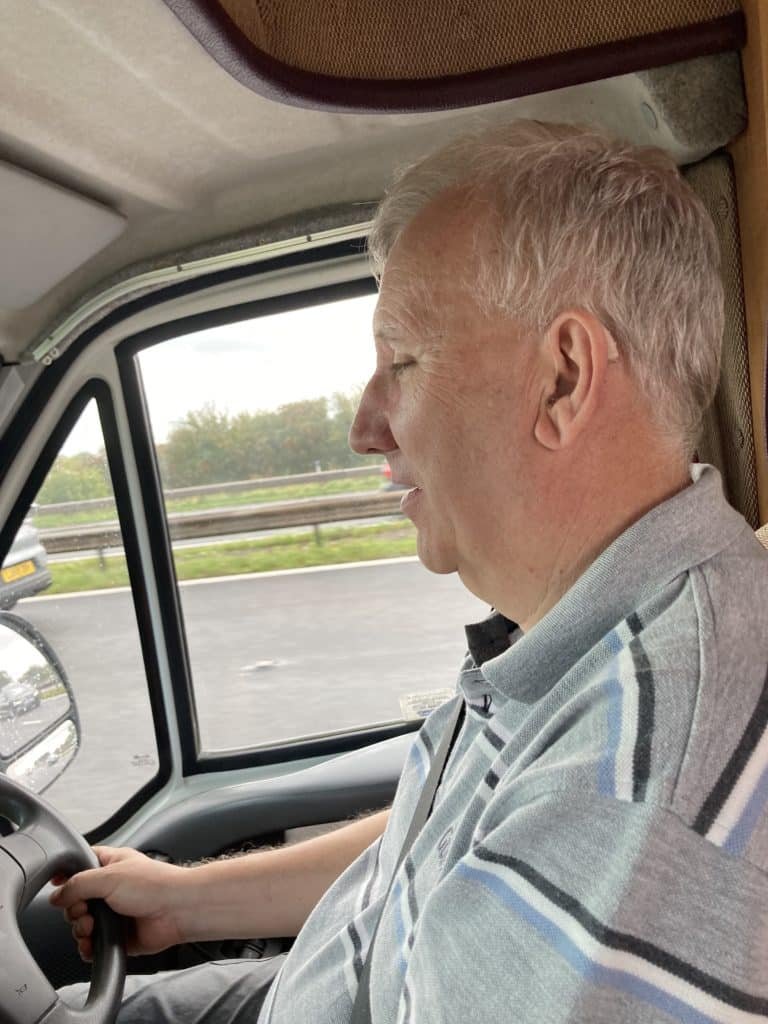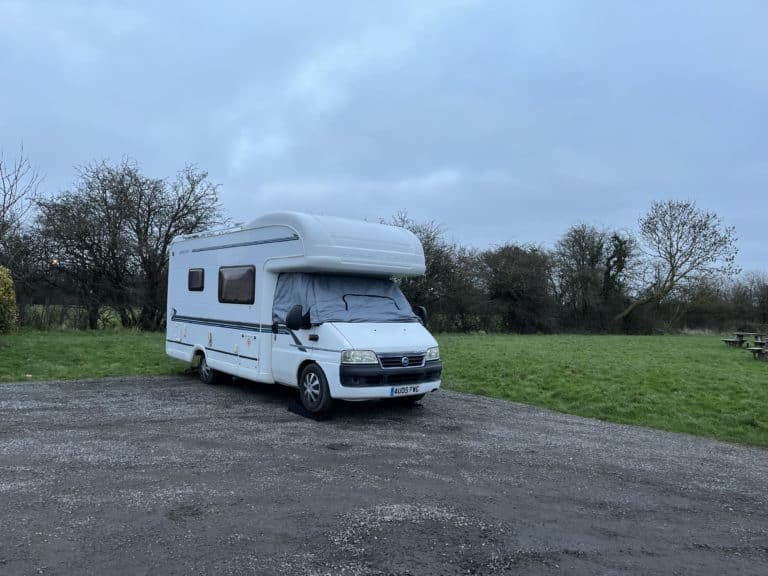
The start of our planned ‘voyage’ to the Jurassic Coast was slightly hampered by Ann catching Covid. Our plan was to leave on Saturday morning head to Uphill Marina and Touring Park to stay one night. The plan was to go out with my sister and brother in law for a meal and a few drinks in the local pub.
Ann felt a little off sorts on Friday evening and when she woke up on Saturday she felt really ill. An hour and one covid test later the result was positive. Cutting a long story short she did not feel better until Tuesday. So we lost £39, a night out and a further two days.


Finally leaving I programmed the Garmin Satnav for Putts Corner Caravan and Motorhome Club Campsite and off we went. The drive was uneventful and we made good time. Eventually driving down the A375 we passed the Hare and Hounds pub on our right. I remember saying to Ann “That’s the name of the pub mentioned on the Club App, we must be close”.
Another long story suffices to say we ended up in Sidbury and the Satnav told us your destination is on the right. The only thing on the right was a single-track road with a sign to Sidbury Manor. This can not be it Ann said and I had to agree, but the narrow road through Sidbury did not lend itself to a U-turn so I turned into the Manor Estate Road.

Having done that the first sign read ‘private road, no entry or turning’. Oh well, hopefully there’s no estate manager with a shotgun, there was however, enough room to turn around.
Stopping at the entrance to check the map I immediately saw my error.
I had typed in Putt Corner and not Putts Corner. The satnav had taken us to the correct place, this was user error and after typing in Putts Corner Elsbeth (Ann named the satnav Elsbeth) immediately told us to turn left and head back the way we came.
Six minutes later Elsbeth told us to turn left after the Hare and Hounds pub, then right into the site. The site was well organised and the staff were extremely helpful, they marked the pitches that were available and told me to just drive around and pick one. This we did but setting up took a little longer as the ramps were used for the first time and there was a lot of toing and froing and as Ann was still not feeling one hundred percent it was down to me to get it sorted.
Later Ann, Ellie and I went for a short walk, and as luck would have it, this walk took us past the Hare and Hounds pub. So, in we went and had some drinks and a lovely meal.

The Jurassic Coast, a UNESCO World Heritage Site located on the southern coast of England, is a geological marvel that spans approximately 95 miles (153 kilometers) from Exmouth in East Devon to Studland Bay in Dorset. This breathtaking stretch of coastline holds a rich history that unfolds over millions of years, showcasing a timeline of Earth’s evolution and the fascinating creatures that once inhabited it.
The story of the Jurassic Coast begins around 185 million years ago, during the Early Jurassic period, when the supercontinent Pangaea began to break apart. As the tectonic plates shifted, the land that would eventually become the Jurassic Coast started to take shape. The region’s geological history is preserved in its cliffs, revealing a diverse array of rock formations, fossils, and ancient landscapes.
The rocks along the Jurassic Coast are a treasure trove for geologists and paleontologists, offering insights into Earth’s past. The area is known for its distinct rock formations, including the iconic limestone cliffs of the Upper Jurassic Purbeck and Portland Beds. These rocks hold a record of the marine and terrestrial environments that existed during the Jurassic and Cretaceous periods.
One of the notable features of the Jurassic Coast is the presence of fossils that provide a glimpse into ancient ecosystems. The region’s rocks have yielded a wealth of marine and terrestrial fossils, including ammonites, ichthyosaurs, plesiosaurs, and dinosaur footprints. These fossils contribute significantly to our understanding of prehistoric life and have made the Jurassic Coast a hub for scientific research.
In addition to its geological significance, the Jurassic Coast has played a role in human history. The area has been inhabited for thousands of years, and evidence of ancient settlements and activities can be found along the coastline. The cliffs served as a source of valuable building materials, including the famous Portland Stone used in constructions such as St. Paul’s Cathedral in London.
Over the centuries, the coastline became a focal point for trade, fishing, and maritime activities. The charming seaside towns and villages that dot the Jurassic Coast, such as Lyme Regis and Swanage, have deep-rooted histories connected to the sea. The iconic Durdle Door, a natural limestone arch, stands as a testament to the erosive forces of the sea over time.
The recognition of the Jurassic Coast’s geological and historical importance led to its designation as a UNESCO World Heritage Site in 2001. This designation acknowledges the site’s outstanding universal value and emphasizes the need for its preservation and protection.
Today, the Jurassic Coast is not only a haven for scientists and historians but also a popular destination for tourists and nature enthusiasts. Visitors can explore the diverse landscapes, walk along the scenic cliffs, and discover the secrets of the Earth’s past embedded in the rocks. Interpretation centers and museums along the coast provide educational resources, helping people of all ages appreciate the significance of this natural wonder.
The Jurassic Coast stands as a living testament to the Earth’s dynamic history and the intricate interplay between geological processes and the evolution of life. As one of the most captivating and scientifically significant coastlines in the world, it continues to inspire wonder and curiosity while contributing to our understanding of the planet’s ancient past.




